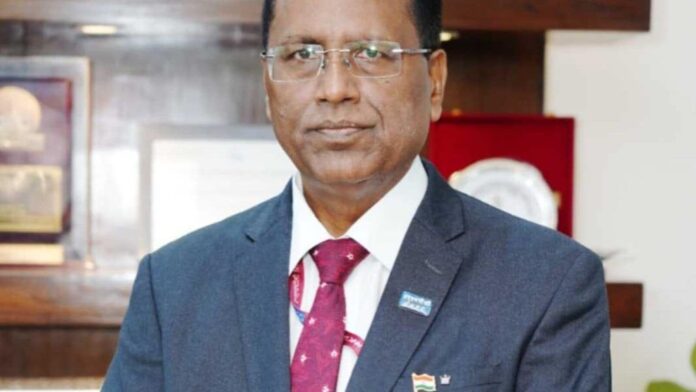India’s largest hydropower generation firm, state-run NHPC Ltd, plans to invest around ₹84,000 crore to set up 20 gigawatts (GW) of pumped storage capacity, which would require an overall capex of about ₹1.2 trillion, primarily through joint ventures.
In an interview withMint, NHPC chairman and managing director Raj Kumar Chaudhary also said that the company is considering listing its renewable energy arm, NHPC Renewable Energy Ltd (NREL), in the next two years.
Speaking on NHPC’s pumped storage project (PSP) plans, he said that with an estimated cost of ₹6 crore per MW, totalling ₹1.2 trillion for 20 GW, NHPC’s capital expenditure would vary as per the joint venture agreements. He added that the cost would be in the 70/30 ratio, with NHPC putting in more money.
“We are working on 20 pump storage projects in different stages. In 12 of the projects, we have completed the pre-feasibility report. Out of that, we have taken up DPR in six projects. In another 8 projects we have taken up for the pre-feasibility report. So, we have 20 pump storage plants we are working on with a total capacity of 20,000 MW.”
The company has already formed joint ventures with Andhra Pradesh Power Generation Corp. Ltd, among others, to set up the projects. The joint venture company ANGEL (APGENCO-NHPC Green Energy Ltd) will undertake five projects in Andhra Pradesh. It is also working in Maharashtra, Gujarat, Rajasthan, Chhattisgarh, and Tripura.
JV with state govts
“Most of the pump storage plants are in collaboration with the state government. The capex is about ₹6 crore (per MW). In Andhra, we have formed the JV as 50-50. So, in some states, it is 76% and 24%. In some states, it is 74% and 26%. The majority is with us. With ₹6 crore per megawatt for 20,000 MW. So, it will be ₹1.2 trillion capex. So, out of that ratio, we will have ownership and capex. Mostly 70/30 (ratio),” he said.
The 70% expense over the overall cost would be around ₹84,000 crore.
Speaking on the company’s renewable power capacity and taking the green arm, NREL, public Chaudhary said the company has an installed renewable capacity of 261.7 MW, and another 1,490 MW is under construction. With the completion of the under-construction capacity, the company plans to list its subsidiary to create value.
“With the development of these and other energy storage, we will transfer it to NREL, NHPC Renewable Energy Ltd. Once some capacity is transferred, operational capacity will be there. So we have kept the timeline of around two years, and within the two years, we will try to get it listed,” the CMD said.
The company’s plan to list its green energy arm was put on the back burner until many energy projects were installed. With the progress in the projects, the company plans to list it by FY27.
Green energy arm
The green energy arm would also include pump storage projects and green hydrogen, as well as solar and wind energy projects.
The CMD said that NHPC also aims to produce and sell green hydrogen commercially. The company has undertaken three pilot projects: producing green hydrogen and running buses through fuel cells in Leh, Kargil, and Chamba (Himachal Pradesh).
“We’ll generate the green hydrogen and sell the green hydrogen because green hydrogen or the green ammonia has the potential export market for India. So we can sell it as green hydrogen and ammonia to different countries.”
Regarding the company’s core business, hydropower, the CMD said that it is targeting 22 GW capacity by FY2034 and expects to surpass this aim from the current 7.3 GW.
On the strategic 11 GW Siang hydroelectric project, Chaudhary said that while the pre-feasibility report (PFR) has been submitted to the government, some surveys have yet to be completed.
“Once PFR is accepted (for the Siang project), we will prepare the DPR. Afterwards, preparing the DPR will take around one and a half to two years. It’s a very strategic project, especially because of the construction of a very large project in the Tibet region, the Motok hydroelectric project,” he said.
He added that with total reservoir capacity of 13 billion cubic metres, the Siang project would provide resistance against sudden floods if China suddenly releases water during the monsoon season and would act as a reservoir to supply water downstream in case China decides to divert the Tsango river (known as Siang when it enters Arunachal Pradesh) during the dry season.
“Upper Siang, as I mentioned, is a strategic project. Siang’s upper multi-purpose project is required from the defence point of view to safeguard from any ill impact of the Motok Dam hydroelectric project. And the power generation is just a byproduct, it will be around 11,200 MW.”
Catch all the Business News , Corporate news , Breaking News Events and Latest News Updates on Live Mint. Download The Mint News App to get Daily Market Updates.
MoreLess
#NHPC #plans #investment #20GW #PSP #eyes #green #energy #arm #listing #FY27
